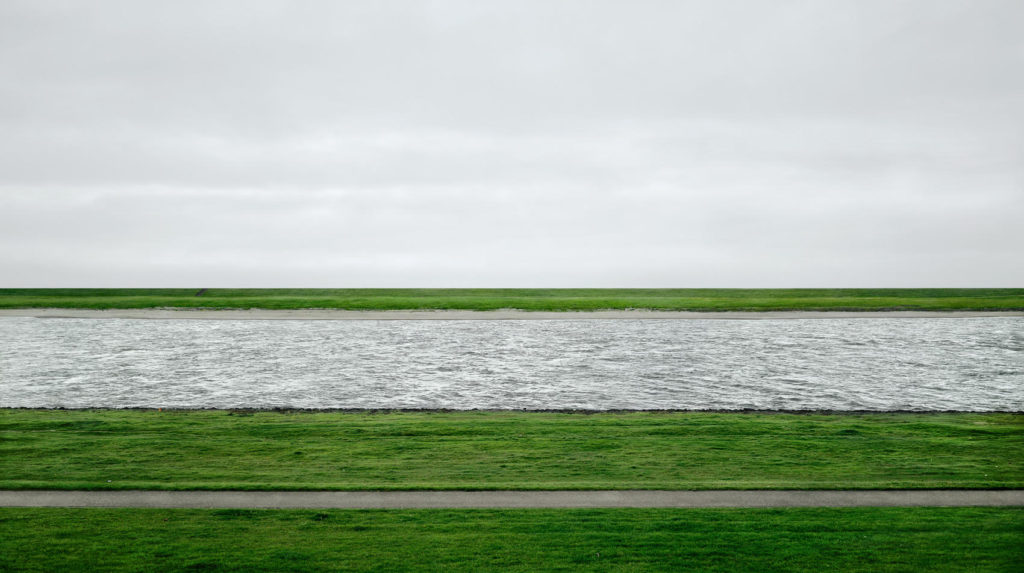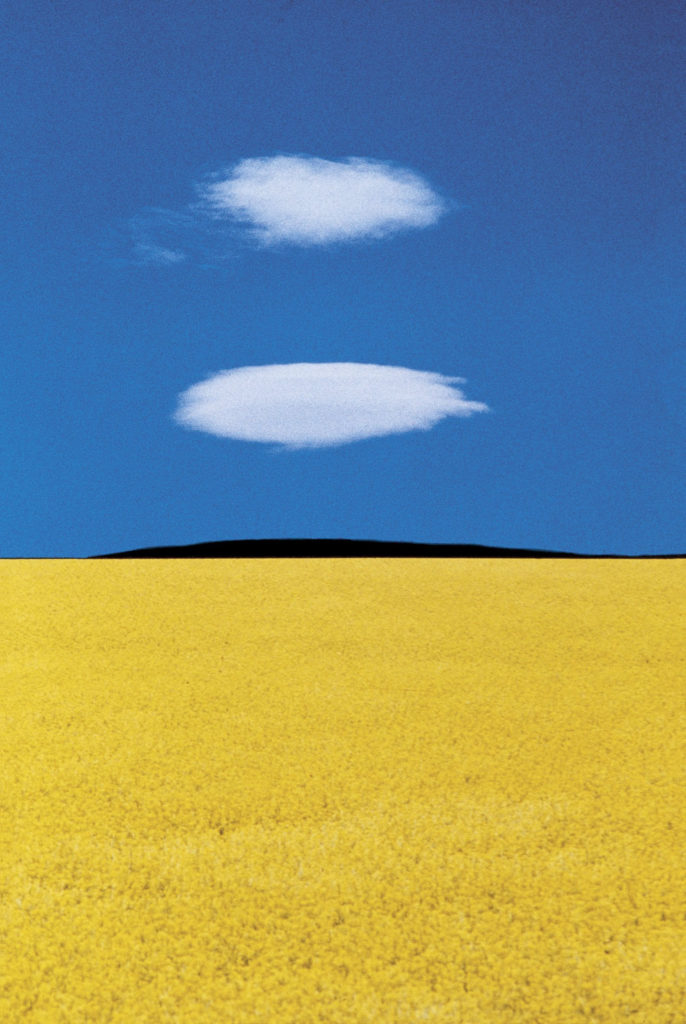14th March, 2022
Tasks
Two tasks to complete:
- Choose two photos, examine, write-up.
- Language of photography (based on David Bate’s writing)
Then, wrap these into a presentation ready for class on Thursday.
Two Photos
This is a follow-up to last week’s activities. I chose the following:
- Andreas Gursky | Selected Works – Rhine II.
- Franco Fontana | Landscape (1978).
Rhine II

Fontana, Landscape (1978)

Gursky
Visual
- Natural light, overcast day.
- Entire landscape is in focus.
- Relatively fast shutter speed – river frozen in time, no motion blur.
- Printed version on satin finish paper (Andreas Gursky, MOMA).
- Very limited monochromatic colour palette – essentially green and grey.
Design
- Highly abstract
- Framing feels irrelevant, like the river could go on forever.
- Horizon is dominant – draws one’s eye.
- Very linear – bands of colour.
Method/Equipment
- Gursky shoots on 5 x 7 and 4×5 inch large-format cameras, before scanning his negatives to work on them digitally. Gursky uses 100 ASA Fuji film in two large-format Linhof cameras that are positioned side by side, one with a slight wide-angle lens, the other with a standard one. Exposure time: 1/8 of a second, f-stop 5.6 to 8. He needs this for depth of field, and the relatively low-speed film for the resolution. While any occasional blurred movement is discarded later in the process. He gains speed by underexposing the film stock one f-stop, and has it developed using push processing.
‘Andreas Gursky Is a German Photographer Known for His Linhof Camera.’ Anatomy Films Analog Photography, 18 Sept. 2018, https://www.anatomyfilms.com/andreas-gursky-big-art-big-money/. - His process involved shooting chromogenic prints (or “c-prints”) with film, using a large-format 5 × 7-inch (12.7 × 17.8-cm) camera; he scanned the images and digitally retouched and manipulated them on a computer. In Rhein II (1999)—which is 5 × 10 feet (about 1.5 × 3 metres)—Gursky created a nonexistent section of the Rhine River.
Andreas Gursky | German Photographer | Britannica. https://www.britannica.com/biography/Andreas-Gursky. Accessed 13 Mar. 2022.
Meaning
- Desire for abstraction, and commentary on landscape free from human presence.
- By joining photographs of different segments of the river, Gursky invented an entirely new landscape, free of industry and human presence.
Andreas Gursky | German Photographer | Britannica. https://www.britannica.com/biography/Andreas-Gursky. Accessed 13 Mar. 2022.
Fontana
Visual
- Natural light, bright sunshine.
- Entire landscape is in focus.
- Possible slow shutter speed, although no movement in field (maybe no wind)..
- No access to print, so unsure of texture.
- Limited colour palette – blue/yellow/white/black.
Design
- Highly abstract
- Essentially frameless – composition continues on
- Dominant horizon – the “island”
- Very linear, bands of colour (cv Gursky)
Method/Equipment
- No info on equipment – often seen with a Leica rangefinder, but recently also with high end Canon digital equipment.
Meaning
- Broke away from black and white as “fine art”; embraced colour.
- Paring down landscapes to essentials.
- Makes colour and texture primary elements.
Comparing the two images
- Both break pretty much all of the unwritten rules of landscape photography/painting:
- No “rule of thirds”.
- No leading lines.
- Little foreground interest.
- No vanishing point.
- No use of negative space.
- No framing elements.
- Strong horizon at the centre of the image.
- Strong use of horizontal lines.
- Very limited palette.
- Little variation in light
- Contrast comes through colour/shape..
- No shadows.
My personal views
I very much dislike “traditional” landscape photography/painting. These two photographs are landscapes, but pared down to the absolute minimum. I like geometric and abstract photographic work, and enjoy how these images use landscape as the base for this.
Clearly I’m not the only one who values this approach: Rhine II sold for $4.3m.
Language of Photography
We split our group of six into two subgroups of three, then choose three of the following elements.
- Perspective
- Blur and movement
- Portraits, mood, and lighting
- Points of view
- Rhetoric – All groups must choose the Rhetoric task because it brings together the themes discussed in the essay.
Next step is to take photos to reflect these elements. Finally, present two or three photos per element to the whole class.
My group chose Portraits, Points of View, and Rhetoric.
References
https://www.tate.org.uk/art/artworks/gursky-the-rhine-ii-p78372
https://www.collecteurs.com/artists/franco-fontana/artworks/landscape281
https://www.onlandscape.co.uk/2022/03/puglia-1978-franco-fontana/
